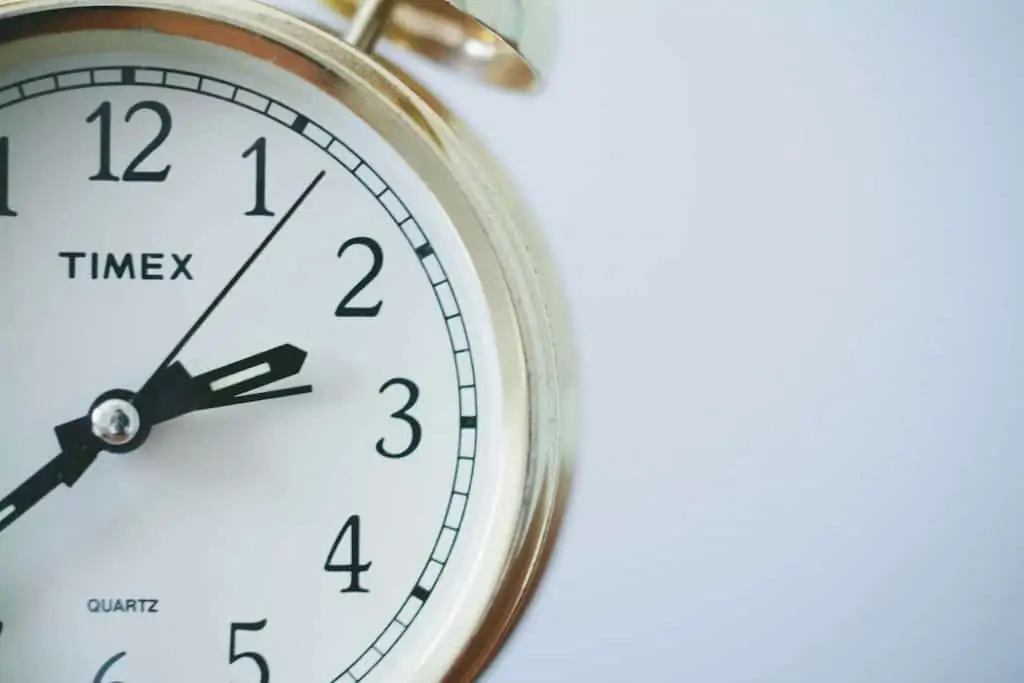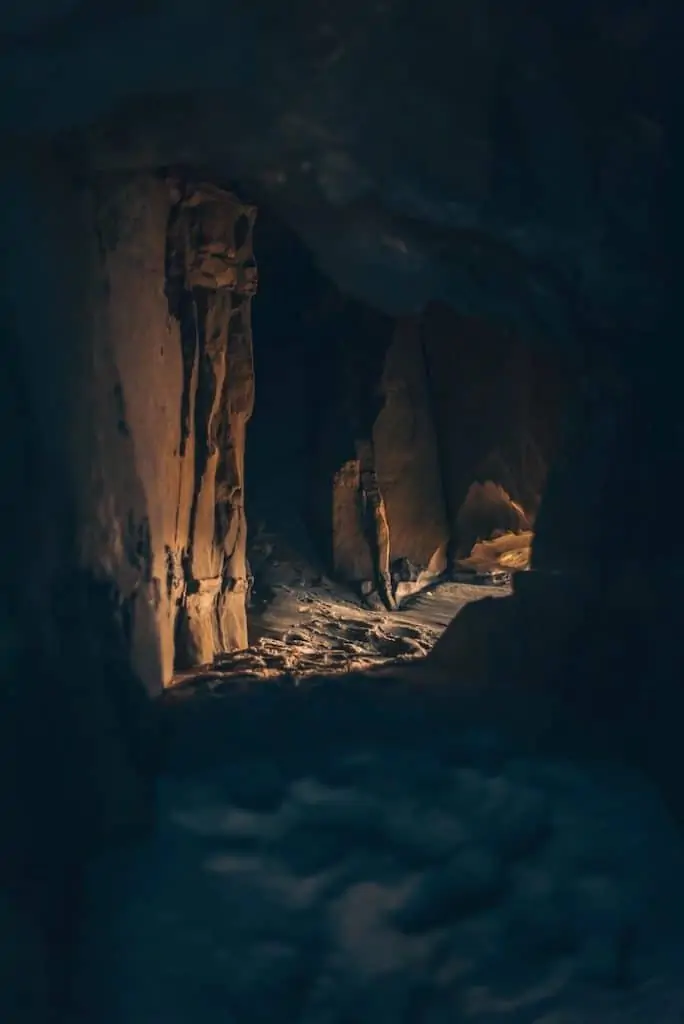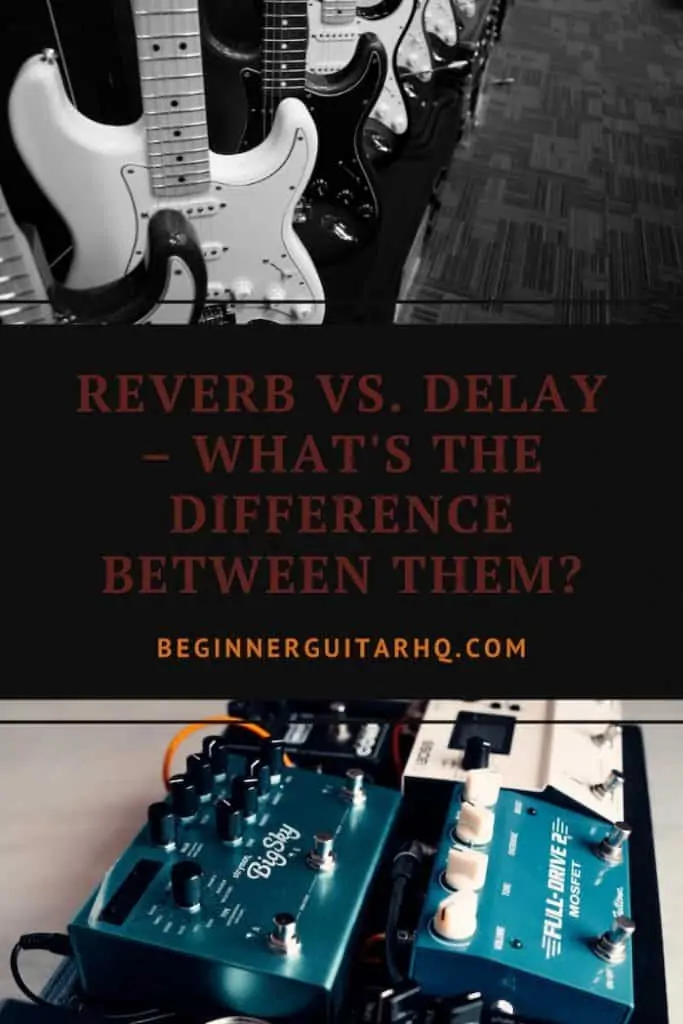One of the funnest parts of learning electric guitar is playing around with the differences between popular effects. Distortion. Chorus. Tremolo. These can all help you push the barriers of a traditional “clean” guitar tone as you develop your own unique sound.
But with so many effects to choose from, it’s easy to get confused about the differences between them. For beginners especially, reverb and delay are two that often get mistaken for each other.
Reverb and delay share some traits. They both play around with differences between space and depth, adding a “larger-than-life” feel to your instrument. They have a long history of popularity –– from 50s blues and rockabilly to modern pop and alternative. Plus, you can buy both effects as either physical pedals or as plugins for your DAW (Digital Audio Workstation).
But they also have major differences between how they work vs. how they sound vs. how they’re used by guitarists and other musicians.
To the untrained ear, these two effects may sound interchangeable. But they do have some noticeable differences in the ways they create echoes
Let’s take a closer look at these key differences…
Contents
First Things First
Before we dive into specifics, let’s talk about the basics of how audio works. This way, you’ll understand the differences in how reverb and delay manipulate audio signals to create cool effects.
How does audio work?
How do guitars produce sound? With the help of vibrating air molecules. These molecules form wave patterns as they travel between spaces.
Let’s say you want to play a low E on your guitar. When you pluck the 6th string, the air molecules around it start to move. The sound waves that are produced by these movements travel to your eardrum. The eardrum vibrates too, sending a signal to your brain to interpret this audio signal as an E note.
A basic sound wave diagram.
This is pretty straightforward. However, when you add an effect to your guitar, it modifies the audio signal and creates a new sound difference.
There are a few ways to do this. But for now, let’s just focus on the most relevant –– time-based effects.
What are time-based effects?
Reverb and delay are two types of time-based effects.
These effects work by taking the dry signal (unchanged audio signal) and copying either the entire signal or a small part of it. These copies (called wet signals) play at set times after the original dry signal is played. This results in one (or more) echoing sounds.

Other common time-based effects include chorus, flanger and phaser.
How They Work
The main difference between reverb vs. delay results from the number and timing of their wet signals. These differences contribute to the unique sonic possibilities of each effect on guitar and other instruments.
Reverb
Reverb happens when a sound is absorbed, then quickly reflected off many surfaces. Because of the time differences between waves as they arrive at your ears, they form a short and subtle, but complex echo. Over time, the surfaces absorb more and more of the sound waves until they fade away completely.
This process usually lasts only 50 milliseconds (ms). As a result, your ear hears reverb as a single sound. A proper echo, lasting between 50-100 ms, sounds more obviously like two or more sounds.
When we talk about the “acoustics” of a space, we’re usually talking about natural reverb. Different kinds of wall surfaces and room sizes affect the nature of reverb, as we’ll explore later on…
Just think about the sound differences between an enormous cathedral vs. a small bedroom. It all boils down to acoustics.
Originally, the only way to add this effect to a song was to go to a specific room, play a recording through a loudspeaker, then record the new results through a microphone. This changed with the invention of two artificial types.
Invented in the 1930s, spring reverb is the OG artificial variety. It consists of two transducers with a metal spring suspended between them. The first transducer creates a sound, which is converted into an electrical signal. This causes the spring to vibrate. The second transducer then picks up the sound, delivering it to the microphone or amplifier.
Even today, you can find these basic spring mechanisms in many guitar amps and pedals (Cropped from “Spring Reverb 8325” by Ashley Pomeroy / CC BY-SA 4.0).
Another method, invented in the 1950s, is called plate reverb. Instead of a spring, it contains a large metal plate suspended between the transducers. Because the plate is super sensitive, it works best in isolated spaces. You can also play around with differences in tail length by stretching the plate or placing dampening pads near it.
Unlike the spring variety, these plates are no longer mass-produced. Still, you can find pedals and plugins that mimic this vintage sound.
Nowadays, most guitarists create this effect digitally. This way, you can mimic a variety of recording spaces and mediums. You can also make various adjustments for factors like:
- Effect level/mix: the volume differences between the dry vs. wet signals
- Decay time: the time it takes for a sound to become inaudible
- Pre-delay time: the amount of time between the dry vs. wet signals
- Tone: the emphasis on lower (bass) vs. higher (treble) frequencies
Although some models use different names, these four factors form the basis of these effects pedals and plug-ins (“Marshall RF-1 Reflector reverb pedal (14292932418)” by Mercado Viagens / CC BY 2.0).
Delay
Like reverb, delay is based on a natural echo. Only instead of a quick series of sound reflections, it consists of slower, single reflections. Your ears can easily detect the differences between these audio signals.
Let’s say you stand in a cave and shout “Hello!” The “hellos” that echo back are a natural form of delay.
Another key difference is delay’s flexible timing. It can last as short as 20 ms or as long as 800 ms. Furthermore, the sound doesn’t need to decay at all. If you apply multiple delays, you can make the echoes go on indefinitely.
Like reverb, delay was originally produced manually, using tape loops. Engineers would record musicians, then pass the sound between several playback heads. The speed of the tape and the distances between the heads would create time differences between the wet and dry signals.
Even today, many effects units try to “echo” the warm vintage sounds of tape loop devices, such as the Maestro Echoplex (“Maestro Echoplex EP-2” by Evan P. Cordes / CC BY 2.0).
This process became easier in the 1960s with the invention of the Bucket-Brigade Device. It would copy an audio signal, slow down the wet signal, then mix the two together before they left the unit.
These days, however, computer algorithms are the #1 choice. After all, they can manipulate these echoes into endless varieties.
Digital vs. analog differences aside, most delay units include the following controls:
- Time: the gap between the dry vs. wet signals.
- Feedback: the number of times the echo repeats.
- Level: the differences in volume between the echoes vs. dry signal.
- Mix/Effect Level: the differences in intensity between dry vs. wet signals.
Aside from VST plugins, physical effects pedals remain popular choices for manipulating these key controls (“Boss-dd-3-digital-delay-306606” by JuandiLOL / CC BY-SA 3.0).
How They Sound
Okay, so now you know the differences between the manual and digital productions of reverb vs. delay. But what about their sound differences? How can you tell which effect is being used in a song?
Luckily, there are some key traits that make each one easy to pick out…
Reverb
When you turn on reverb, you’ll notice that it adds obvious space and depth. It makes your guitar sound bigger, but also further away. Still, it’s a great way to create a specific environment and draw your listeners into this sonic landscape.
Different kinds also have their own sound qualities. For example, plate is bright and metallic, with a subtle feel and a medium decay. Spring has a slightly shorter decay, along with a bouncy, twangy feel.
Other popular types include:
- Stereo: any type with multiple audio inputs. Because it pans between left and right (or vice versa) across the audio space, it creates a subtle, “washed out” effect.
- Mono: any type with a single audio input. It is more tightly controlled and in-your-face than stereo.
- Drip: a spring variety with a maxed out effect/mix level. This creates a lush, wet sound –– hence the “drip”.
- Shimmer: a synth-like crescendo of sound differences.
- Gated: a manipulation of natural reverb, where the sound is cut off before its decay. It was popularized by drummer Phil Collins in the 1980s and still appears on some drum tracks today.
- Room: an imitation of any relatively small space with a short decay, like a bedroom or small music studio. It creates a warm, subtle sound that’s similar to the spring type, but more linear sounding.
- Chamber: an imitation of a small performance space for orchestras. Tonally, it’s in-between a room and a hall, with a similar intensity to the plate variety.
- Hall: an imitation of a large concert hall. It’s as tonally perfect as possible, with a long decay.
- Church/Cathedral: an imitation of the larger-than-life acoustics of a church. It has the longest decay of any type.
<iframe width=”560″ height=”315″ src=”https://www.youtube.com/embed/c45q329eo7I” title=”YouTube video player” frameborder=”0″ allow=”accelerometer; autoplay; clipboard-write; encrypted-media; gyroscope; picture-in-picture” allowfullscreen></iframe>
This video covers the differences between four common types of reverb –– room, hall, spring and plate.
Delay
When you turn on delay, you’ll notice one major difference — the sense of depth. While delay also creates space and makes your guitar sound bigger, it does this while keeping things close to the listener.
There are even more varieties of delay, with drastic sound differences between them. These include:
- Stereo: unlike mono delay (most types), this creates a difference in the left vs. right sound outputs. Its low feedback makes it sound more like a natural echo.
- Analog: dark, fast-paced echoes –– similar to a Bucket Brigade device.
- Tape: warm, gritty echoes –– similar to a tape machine.
- Slapback: quick, punchy echoes with a realistic feel.
- Doubling: extremely fast echoes, creating the illusion of multiple instruments playing at the same time.
- Long: drawn-out echoes with audible time differences between the dry vs. wet signals.
- Looping: extremely long echoes that seem to go on indefinitely.
- Reverse: echoes played backwards to the dry signal, with a psychedelic feel.
- Ping-pong: a stereo variety with a ricochet effect.
- GLT: a machine gun-type echo.
- Dotted 8th: a type that echoes the final note of a beat. Made famous by U2’s The Edge, it creates the illusion of playing 16th notes –– even though you’re only playing 8th notes.
- +RV: a mixture of delay and reverb.
- Modulated: an extension of delay into modulation effects, such as chorus, flanger or phaser.
<iframe width=”560″ height=”315″ src=”https://www.youtube.com/embed/RwD24jS1cuM” title=”YouTube video player” frameborder=”0″ allow=”accelerometer; autoplay; clipboard-write; encrypted-media; gyroscope; picture-in-picture” allowfullscreen></iframe>
To hear the key differences between digital vs. tape vs. analog delay, check out this video.
How They’re Used
Now that you know the key differences between reverb vs. delay, the next step is to start using them to enhance your guitar playing.
The best way to do this is by experimenting. After all, what works for some guitarists may not work for you.
But if you want a bit more guidance, here are some things to keep in mind…
Guitar reverb
If you want to recreate a specific environment, this effect is your best bet. You can use it to mimic the acoustics of an intimate jazz club, a towering cathedral or even a tiny cupboard. The possibilities are infinite!
Some varieties, like plate, can bring differences in harmonics or frequencies to the front of the mix. This is especially helpful if you want to create contrast between instruments. For example, a bright guitar reverb can ease the tension of dark, moody vocals.
Another great thing about this effect is its flexibility. You can turn it on for an entire song or use it sparingly to highlight certain sections, like a chorus or solo.
Still, reverb has its limitations. Because of its larger-than-life quality, it works best for slower songs with simpler arrangements. This way, you can let it decay naturally –– around 2 or more seconds. This also gives you more room to work with unpredictable types (i.e. church, hall) without overwhelming the other instruments.
You can still use it for faster songs. Only, it’s better to set your decay between 0.1-1 seconds and work with subtler types, like room or stereo. Otherwise, the long tails will muddle the mix.
Depending on what guitar genres you play, reverb may be the perfect effect to capture those essential sound differences. For example, drip is a hallmark of surf music. Spring is often used in classic blues tracks, while gated appears in 80s power ballads. Room also features in low-key jazz and folk tunes.
While it works wonders in genres like surf, too much reverb can easily wash out the mix in distortion-heavy genres like metal.
You can even combine reverb with other effects. For example, EQ can help cut the mud by removing the extreme bass and treble frequencies. Just remember though –– if you’re combining reverb with overdrive, distortion or fuzz, always place it behind the others. Otherwise, you won’t hear the full combination.
If you’re adding both reverb and delay, it’s more common to put reverb first. But you can put delay ahead in the chain for some interesting tones.
Looking for more inspiration? Check out these famous examples of guitar reverb in action:
- “Miserlou” by Dick Dale & the Del Tones: this surf rock anthem is one of the most famous examples of the drip type.
- “Shine On You Crazy Diamond” by Pink Floyd: Pt 1 of this prog rock classic is dominated by the spring variety, while Pt 2 starts to incorporate delay.
- “Cathedral” by Van Halen: this instrumental song features a church/cathedral type, combined with delay.
- “Hallelujah” by Jeff Buckley: the “Taj Mahal” digital preset gives this Leonard Cohen cover its iconic tone.
- “Stellar” by Incubus: the interlude combines a plate type with phaser.
<iframe width=”560″ height=”315″ src=”https://www.youtube.com/embed/y8AWFf7EAc4″ title=”YouTube video player” frameborder=”0″ allow=”accelerometer; autoplay; clipboard-write; encrypted-media; gyroscope; picture-in-picture” allowfullscreen></iframe>
Guitarist Jeff Buckley’s version of “Hallelujah” uses digital reverb to highlight the intimate, heartbroken lyrics.
Guitar delay
The beauty of delay is that it can make tracks sound bigger and more confident, even with less notes. It can complement existing guitar grooves or create new ones out of static elements.
Unlike reverb, delay can work wonders on either fast- or slow-paced, rhythmic songs. Just make sure that you’re syncing the delay time to the tempo and cutting back on the feedback. Otherwise, you might muddy the mix.
If you want, you can even add some reverb-type ambience with a quick mono delay. This way, you can still add space, without overwhelming the other instruments
In most popular guitar genres, delay isn’t used for an entire song. It can lose its punchy effect once it gets repetitive. So to keep things fresh and interesting, it’s better to reserve it for a small section like a guitar solo, chorus or verse riff
One notable exception is in reggae. The tape variety is essential to the laid-back feel of this genre, while ping pong can create some catchy call-and-response riffs. Similarly, in classic blues and rockabilly, slapback is often combined with spring reverb to set the mood.
Reggae and other Caribbean genres use maximum delay to create complex rhythms.
Like reverb, you can combine delay with other pedals/plugins. For example, volume, overdrive and distortion can rev up the echoes, while EQ can keep things focused by removing the top (extreme treble) and low (extreme bass) ends of the mix.
Unless you’ve got a looper pedal in your chain, delay should go behind all your other effects –– except for maybe chorus, for an eclectic sound. But ultimately, its role is to repeat all the other effects that precede it.
To hear delay in action, have a listen to these songs:
- “Mystery Train” by Elvis Presley: Scotty Moore, Elvis Presley’s backing guitarist, is famous for his use of rockabilly slapback style in songs like this.
- “Dub You Can Feel” by King Tubby: this genre-defining reggae classic combines reverb and delay for a DIY, rhythmic feel.
- “Run Like Hell” by Pink Floyd: David Gilmour combines two pedals for a “triplet feel” in this prog rock favorite.
- “Big Sur Moon” by Buckethead: mixing palm-muted dotted 8ths with a single delay, this instrumental track has been inspiring shredders for the past 20 years.
- “Shut Up and Dance” by Walk the Moon: this modern indie favourite draws on U2-esque dotted 8th notes for the main guitar riff.
<iframe width=”560″ height=”315″ src=”https://www.youtube.com/embed/XA5HErVE9oI” title=”YouTube video player” frameborder=”0″ allow=”accelerometer; autoplay; clipboard-write; encrypted-media; gyroscope; picture-in-picture” allowfullscreen></iframe>
“Mystery Train” by Elvis Presley is one of the most famous examples of slapback delay. It adds a rhythmic chug to the guitar, mimicking the sounds of an actual train.
Other instruments
Of course, these two effects aren’t limited only to guitars. Other instruments (including voice) also make use of them to experiment with different sounds.
Aside from guitar, reverb is most commonly added to vocals to play with depth and space. In the 1960s, Phil Spector used echo chambers to experiment with the natural form in his famous “Wall of Sound”. Many 90s tracks, from Pearl Jam’s “Even Flow” to Enya’s “Orinoco Flow”, also amped up the artificial reverb to make singers’ voices sound enormous.
You can hear Wall of Sound-style vocal reverb in Spector-produced classics like The Ronettes’ “Be My Baby” (“The Ronettes 1966” by Renamed user 995577823Xyn / CC0).
Nowadays, however, vocal reverbs tend to be more subtle, so they don’t disappear between the closer instruments in the mix. You can hear this style in songs like Hozier’s “Take Me To Church”.
Similarly, vocal delays are used to amp up the excitement. You can hear a variety of echo types in songs like Elvis Presley’s slapback style “Mystery Train” vs. Alice in Chain’s long style in “Angry Chair”. Be warned though –– longer-style varieties can make your voice sound too muddy and artificial. That’s why most vocalists opt for the quicker types.
Other key players in the reverb vs. delay game are drums and bass. A subtle snare drum reverb can create a world of difference in the power of your beats. You can hear this in songs like Led Zeppelin’s “When the Levee Breaks”, which uses natural reverb from a historic stairwell to create an oozing backing track for the vocals. The artificial type on the bass for “I Wanna Be Adored” by The Stone Roses has a similar effect, though at a much faster pace.
Drum and bass delay may not be as common in pop and rock. However, slapback is a key component of hip hop, R&B and EDM tracks, like Thundercat’s “Them Changes”. It’s a great way to keep things moving forward at a focused pace, vs. the overwhelming nature of reverb.
Final Thoughts
As a beginner, it may be difficult to spot the key differences between reverb vs. delay. But once you understand the production vs. sound qualities between each one, you can start using them to recreate your favourite effects on your guitar (and other instrument) tracks. Not to mention experimenting with your own grooves….












